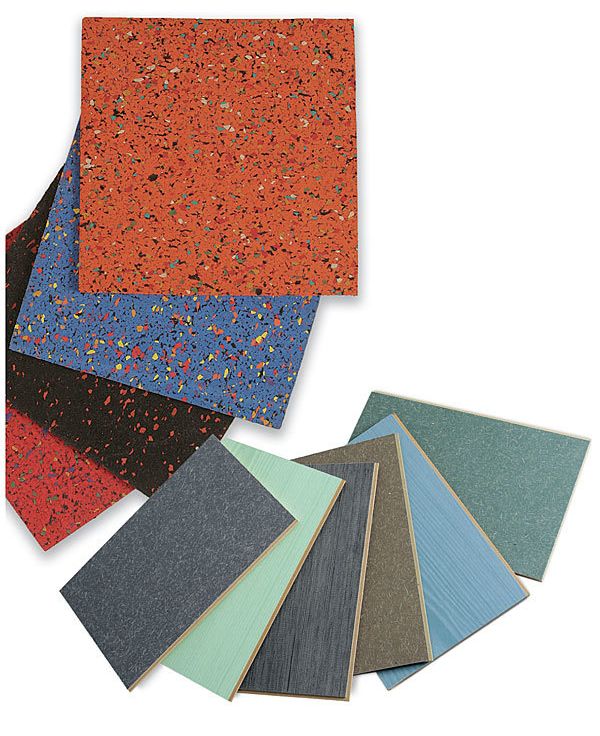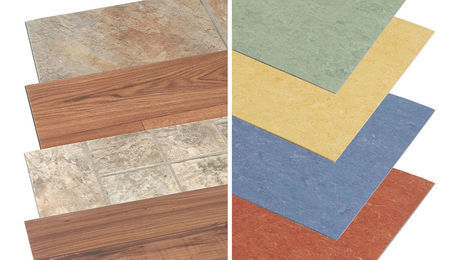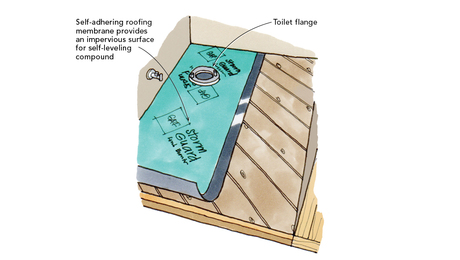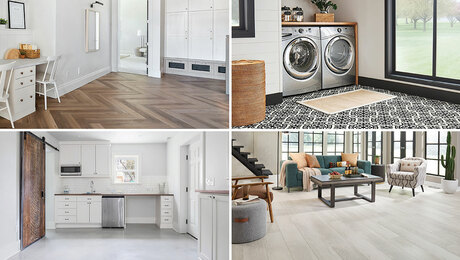Flooring Options for the Kitchen
From concrete to cork, here are the facts you need to make the right choice when selecting a flooring material for your kitchen.

Synopsis: Sorting through the array of flooring materials can be a dizzying process, and finding the right balance between style and function is often the most difficult task. Each type of flooring has strengths and weaknesses, which greatly affect how it’ll live in your kitchen. Whether you’re looking for the charm of hand-scraped hardwood, the comfort of cork, the durability of concrete, or the “greenness” of palm—or perhaps brick, stainless steel, stone, ceramic, laminate, vinyl, linoleum, bamboo, or rubber—writer Matthew Teague pinpoints the benefits of each product, highlights its flaws, and attaches a price tag to it.
As the most highly trafficked space in the house, a kitchen’s floor has to withstand everything from spills to stilettos. The kitchen is the social heart of the home, playing host to dinner-party guests, friends, and family on a regular basis. The floor needs to look good, be comfortable to walk on, and wear well over time.
Sorting through the array of flooring materials can be a downright dizzying process, and finding the right balance between style and function is often the most difficult task. Each type of flooring has strengths and weaknesses, which greatly affect how it’ll live in your kitchen. Whether you’re looking for the charm of hand-scraped hardwood, the comfort of cork, the durability of concrete, or the “greenness” of palm, I’ll pinpoint the benefits of each product, highlight its flaws, and attach a price tag to it. Before you dive in, remember: No single type of flooring material is best. The right kitchen-flooring choice is a reflection of your overall taste, the needs of your home, and your budget.
Wood maintains a tradition of durability and comfort
Aside from rock and dirt, wood floors probably have the longest history of any flooring type. While traditional, unfinished solid-plank flooring continues to be installed in kitchens across the country, there are two other wood-floor options available that just might outperform it. Engineered and prefinished wood flooring can be installed more quickly than unfinished solid-wood boards without abandoning their look, comfort, or durability. A wood floor’s longevity, however, is largely dependent on the way it is finished and maintained. For years, oil-based urethanes were the finish of choice, but modern water-based finishes are just as durable and can be applied faster and with less odor. Sweeping regularly helps to prevent dirt from wearing away the finish.
Solid wood
Solid-oak floors have made up the bulk of the wood-flooring industry for years, but that doesn’t
mean that wood floors have limited style. Solid-wood flooring can be made out of everything from ash to zebrawood and milled to most any width you’d like. In the kitchen, hardwoods perform best. Although softwoods like pine look good and are readily available, they’re not as tough as hardwood species and wear quickly under heavy use. Some hardwoods are harder than others, but all are rugged enough to handle everyday abuse in a kitchen. Solid hardwoods will last as long as your house, and they’re also comfortable underfoot. Wood flexes just enough to ease the tension on your feet, legs, and back.
If your tastes lean toward traditional hardwood and you’re in the market for an environmentally friendly floor, take a look at flooring made from recycled lumber or from the old-growth timbers now being hauled up from some lake bottoms.
For more photos and information on flooring options, click the View PDF button below.


























